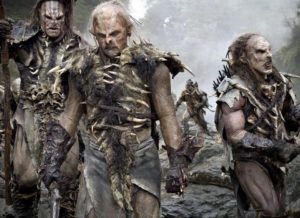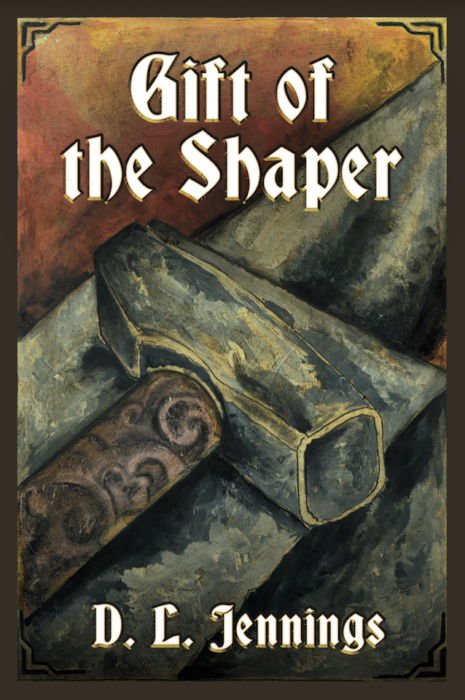A good character needs a good name
Above all, I’ve always loved coming up with names. Whenever I sit down to write, I always try to fit the name to the character/person I’m writing. In one sense, the name becomes the character: you hear it, and picture them in your head. You couldn’t imagine George R.R. Martin’s Jon Snow being named Tormund, or J.K. Rowling’s Ron Weasley being named Severus, right? It’s why, when I stumble on a name I really love, I get ecstatic.
Well, the other day I landed on a name that was so good that I literally had to pause for breath after writing his introductory paragraph. What follows is how it came about.
The name becomes the character
I was writing a new chapter for the sequel to Gift of the Shaper (tentatively titled “Three, Awaken”), and I had to come up with a name for a new character. There are a few ways of doing this, and I thought I’d share my methods.
My first and most reliable method for naming new characters is … (drumroll) …
- Make them up.
As a lover of all things RPG, I have a long history of making stuff up that dates back to my early teenage years (Dwynn Stormhammer, Dwarven warrior, made his debut in a D&D game when I was 15). To make up a name, I start out by rolling around some sounds in my heads and relating them to the character. Do I need something sharp, or something with a lot of vowels in it that will sound extravagant and refined? This is how I came up with the names for characters like Kethras and Yetz, or Ynara and Elyasha. Sometimes you just land on something that sounds good and you go with it.
Other times, if I’m not feeling as creative, I will simply … (extended drumroll) …
- Throw darts at a globe.
Ok, this one is slightly less than literally, but barely. I actually like to look at city names for inspiration, and I’ve done it several times in the past. For the character I was writing this instance, I opted for this method. The character was from Beyond the Wastes, so I knew it had to have a certain “sound” to it. Something sharp and bold and nothing fancy (he’s more or less a commoner, after all). I happened to be looking at a map of Africa, so I started scanning around for cities that might help me out.
After a few minutes of searching, I came across the perfect one in a city called Savalou, in Benin. The spelling of the name was a little too fancy for my taste (remember, commoner) so I altered it to Sivulu, which I thought was perfect for a rugged, bearded guy with dark features.
Sivulu — Siv to his brothers — was born.
Now for a little more on coming up with names.
Drawing inspiration
For Gift of the Shaper, my favorite name of all was Kethras. It was so well-suited to the older Kienari: mysterious, exotic, and reminiscent of one of Tolkien’s Quenya-speaking elves. (And Tolkien, as a linguist, was an absolute master with names and is someone I aspire to emulate in my writing and character creation).
For city names like Khala Val’ur (originally TianaVal’ur, which I decided was terrible so I changed it about halfway through) or Gal’dorok, I knew I needed something rough and coarse, like the Black Speech of Tolkien’s Orcs.

I put together syllables that sounded good to me and would also roll off the tongue easily — these were words that the reader would be pronouncing dozens and dozens of times. For cities like Annoch and Lusk, I leaned more towards brighter-sounding Gaelic and Irish-inspired names because I thought it would provide a good contrast against the darker names of the Khyth like Yetz and D’kane.
And sometimes, like in the case of Lash’kargha, I blatantly borrowed (“stole,” some might say) from real-life cities. I had been deployed to Afghanistan a number of times already, and I loved some of the city names, with Lashkar Gah being my favorite. It just sounds so fantastic! I couldn’t not use it.
I also used the Afghan cities as a template for a few other city names which I didn’t use in the first novel but will make an appearance in the next one. For names like Do’baradai and Haidan Shar, I owe thanks to my deployments to Afghanistan once again. Using names of cities I’ve been in (or near) is a lot like leaving a trail of breadcrumbs for my life, too. I’ll never forget my time in Afghanistan, and now that it’s worked its way into a book, neither will anyone who reads it either.
So there you have it! It was a small glimpse into the process, but I hope the little peek it gave you a good idea of how I do things and, most importantly, how much I really enjoy doing this stuff.
Thanks for reading.
-D.L.
